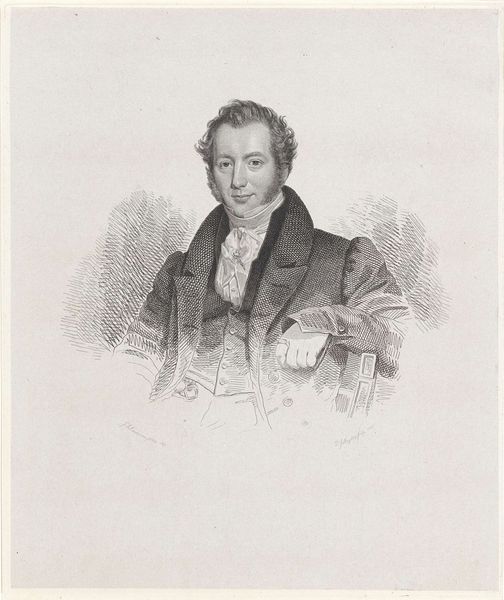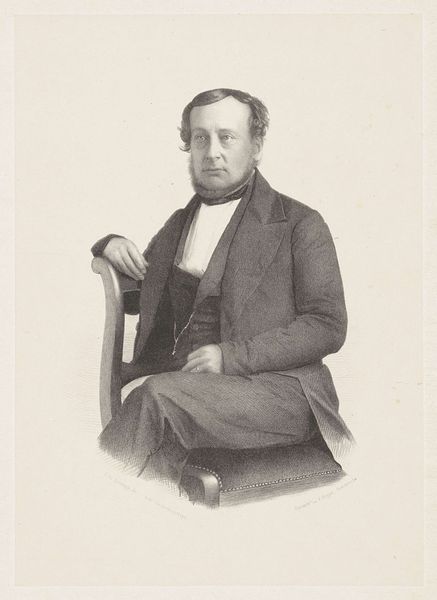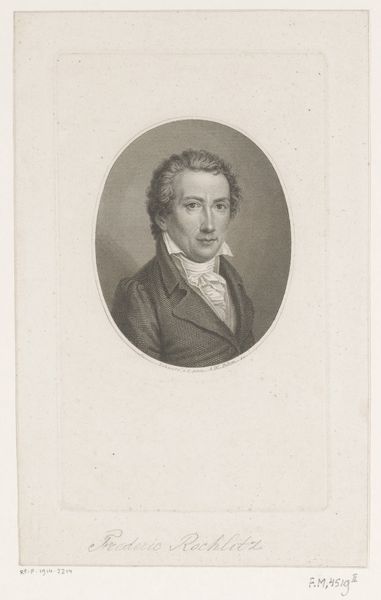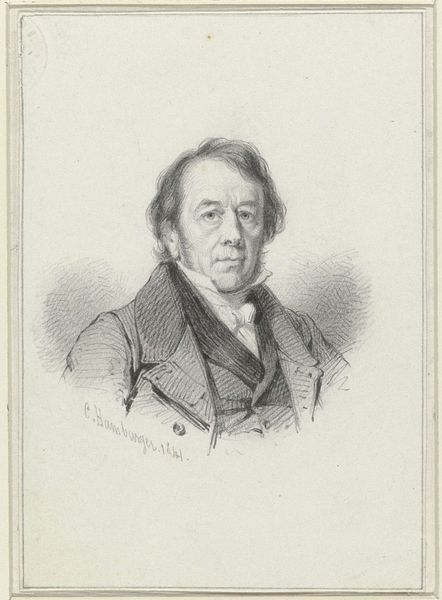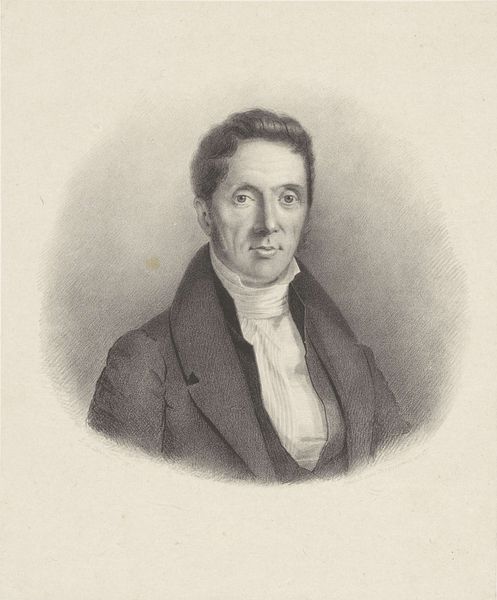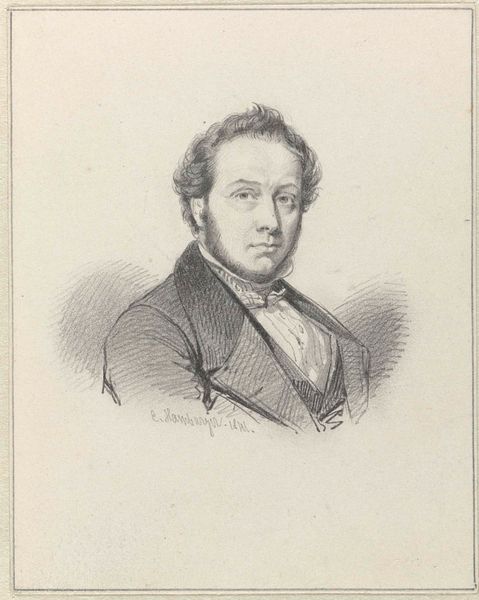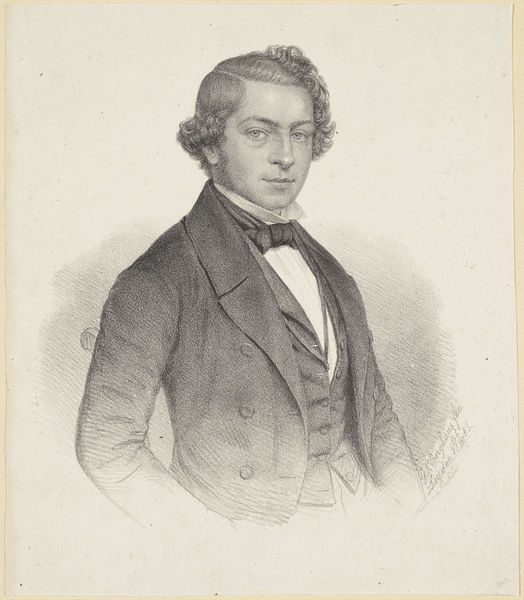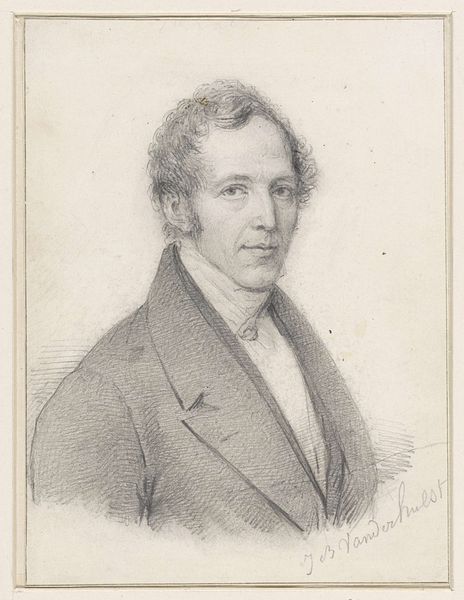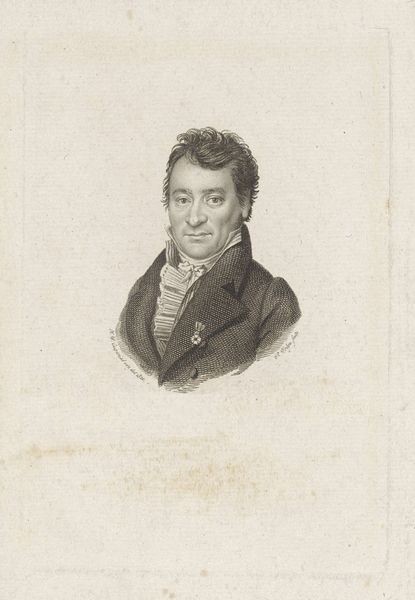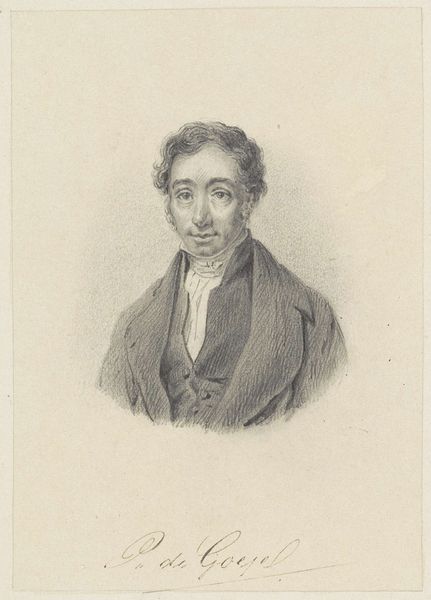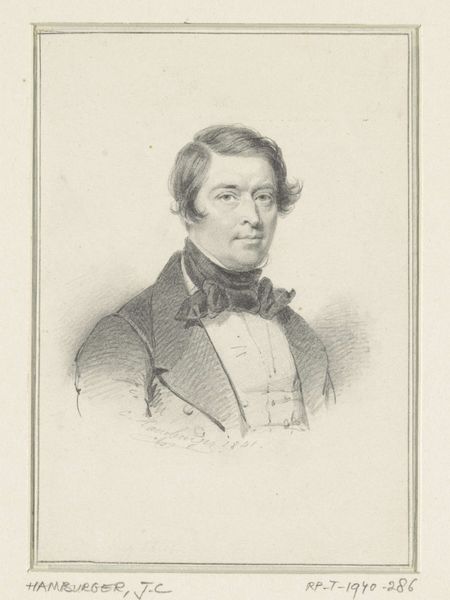
drawing, lithograph, print
#
portrait
#
drawing
#
portrait image
#
lithograph
# print
#
historical photography
#
pencil drawing
#
portrait drawing
#
fine art portrait
#
realism
Dimensions: height 447 mm, width 311 mm
Copyright: Rijks Museum: Open Domain
This is a portrait of Willem Pasques de Chavonnes Vrugt, created by Abraham Meyer de Boer, using lithography, a printing process, to transfer an image from a stone or metal plate to paper. Lithography, unlike traditional etching, depends on the chemical repulsion between oil and water. The artist draws on the stone or plate with a greasy substance, then applies water, which is repelled by the greasy areas. Ink, which is also greasy, adheres only to the drawn areas, allowing the image to be printed. The texture of the print shows a great deal of handwork, implying a degree of craft production. The lithographic process was revolutionary, because it enabled images to be reproduced relatively quickly and cheaply. In this way, lithography democratized image production, and made art accessible to a wider audience. Consider how these materials and making processes, along with their wider social and economic context, shape our understanding of the artwork, and challenge the traditional divide between fine art and craft.
Comments
No comments
Be the first to comment and join the conversation on the ultimate creative platform.
